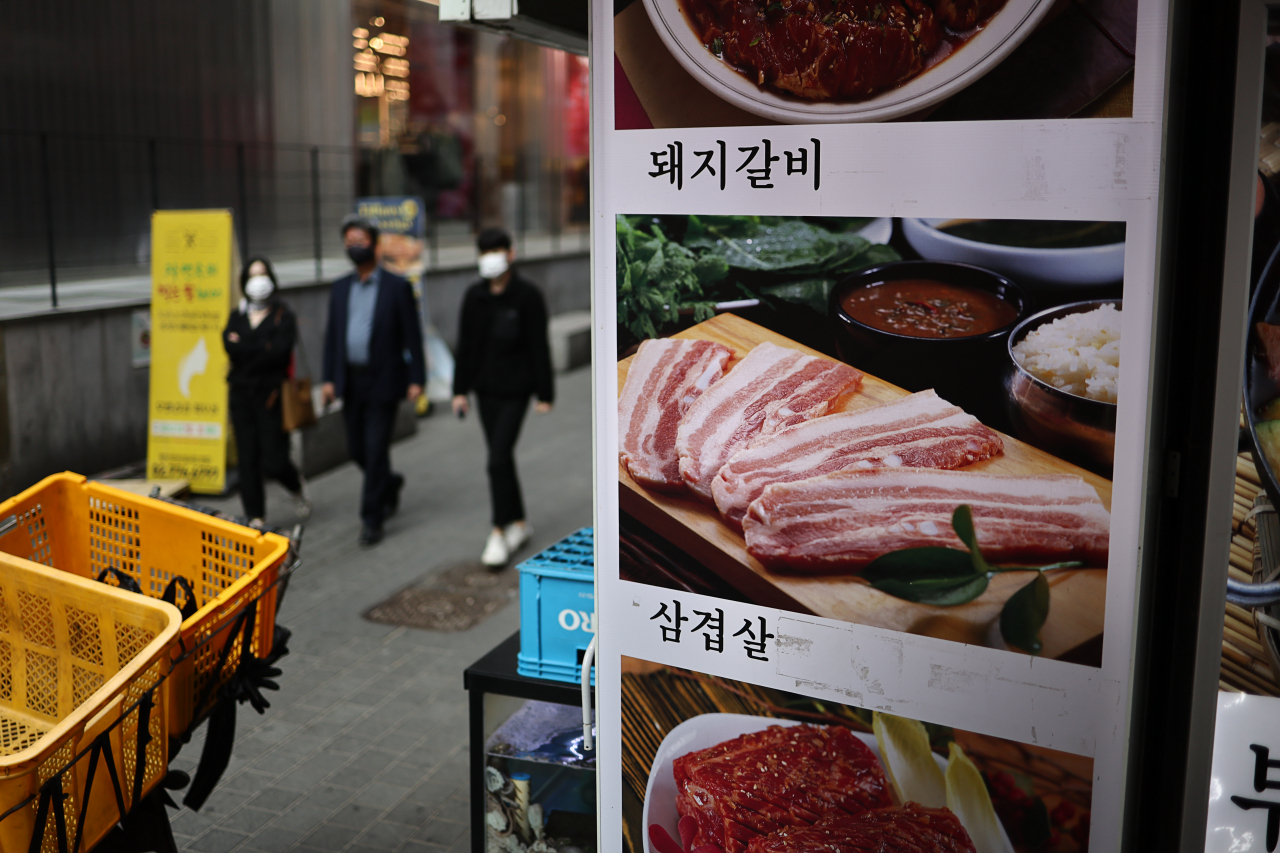'Family month' of May faces inflation woes
Popular dining menus see 10% growth in prices over past year alone, with no immediate signs of abating
By Lee Yoon-seoPublished : May 1, 2023 - 15:58

May, also known as "family month," is when Korean consumers dine out in celebration of a string of family-oriented holidays such as Children's Day, Parent's Day and Teacher's Day.
However, with the country seeing an exponential growth in consumer prices lately -- mainly those of agricultural products and livestock -- concerns are rising that dining out is increasingly becoming less affordable for most Koreans.
Kim, a white-collar worker in his 20s, told The Korea Herald that he is thinking twice about taking his family out for dinner on Parent's Day.
"I recently got a job at a company that I've always wanted to get into, and for Parent's Day, I was planning to take my parents somewhere nice to celebrate it," said Kim.
"However, the prices I see at the restaurants are shocking. For all the restaurants that I want to go, I have to expect to at least spend 200,000 won ($149) or more for a single meal (for a family of four)," he added.
"Frankly, that's financially burdensome for me at the moment."
In Seoul, the average prices of eight most popular food items when eating out, such as gimbap (seaweed-wrapped rice roll), samgyetang (ginseng chicken soup), naengmyeon (cold noodles) and samgyeopsal (fried pork), had risen by an average of 10.3 percent in March, compared to the same month a year prior, according to Korea Consumer Agency data.
One serving of samgyeopsal, around 200 grams of pork, was tallied at 19,236 won on average, a 12.1 percent jump from a year before, according to the KCA.
A bowl of samgyetang cost an average of 16,346 won, a 12.7 percent increase from the year before, and a serving of jajangmyun, or noodles in black bean sauce, cost 6,800 won, a 16.3 percent jump from last year.
Other popular food items such as gimbap cost 3,123 won per row, showing a year-on-year increase of 10.3 percent, while naengmyeon and bibimbap saw a year-on-year increase of 7.3 percent and 8.6 percent, respectively.
Those in the food industry say the the surge in food prices are inevitably expected to continue for some time, as the inflation of ingredient prices such as livestock and agricultural commodities show no signs of abating.
"It's a domino effect. The imported agricultural commodities' prices are escalating nonstop due to the supply disturbances caused by extended war between Ukraine and Russia," said a representative from a local food company on the condition of anonymity.
"Also, the won-dollar exchange rates are continuing to rise as well, adding to the increase in prices of imported goods (including pork, beef and chicken). With the labor costs having sharply risen as well, food companies as well as restaurants have no choice but to raise the overall prices (in order make profits)," he said.
"With May around the corner, I expect the general demand for dining out will increase -- adding to even more surges in (food) prices."




















